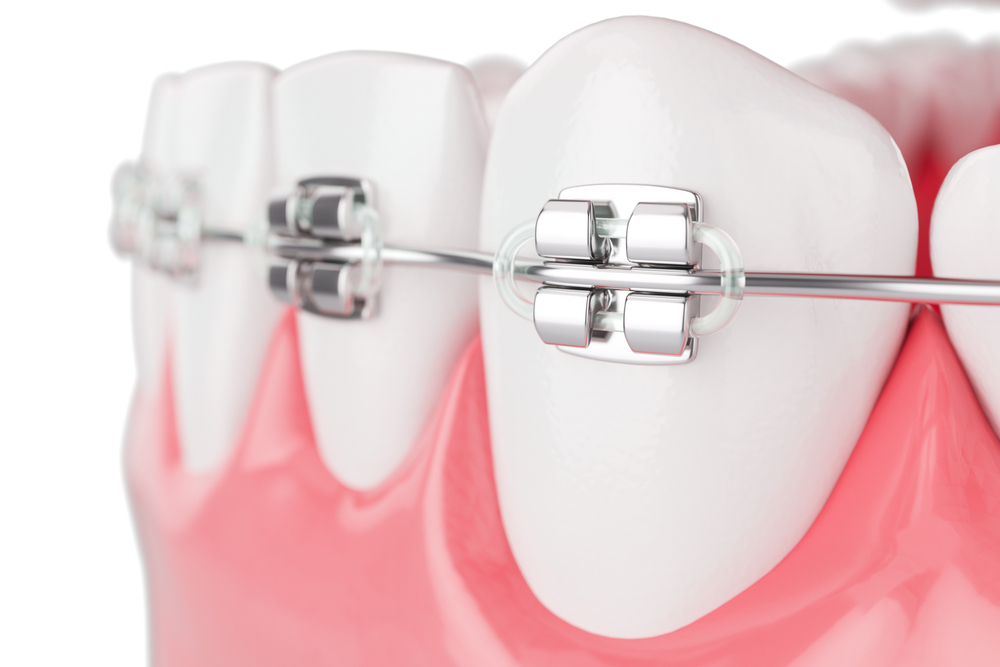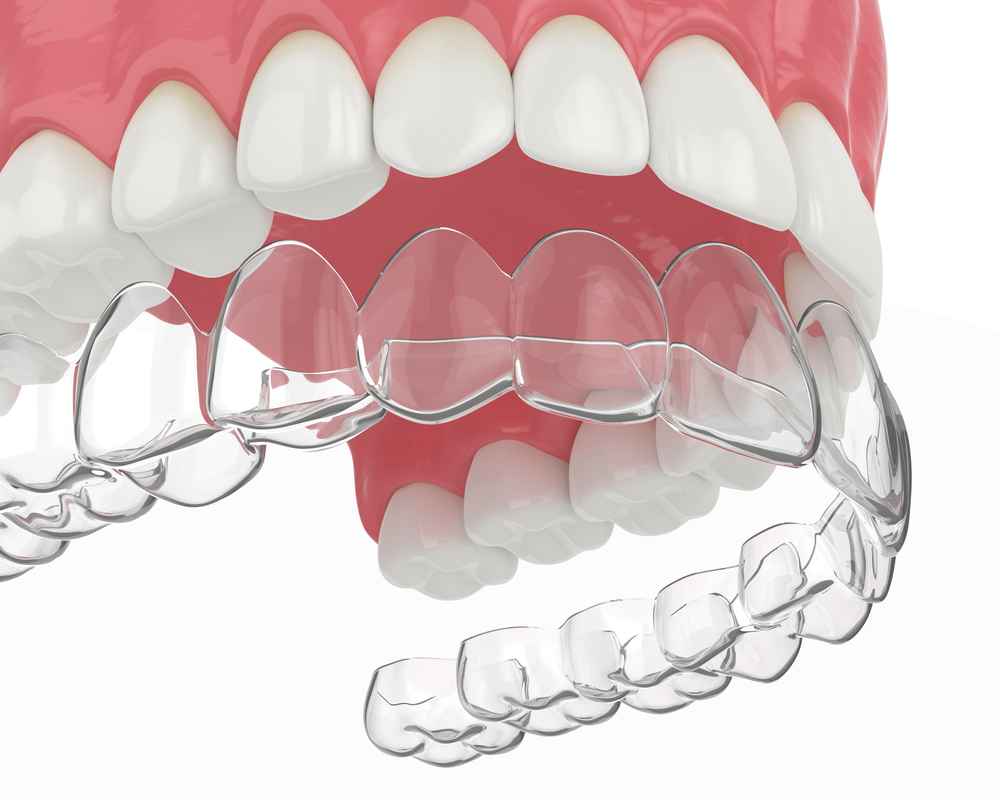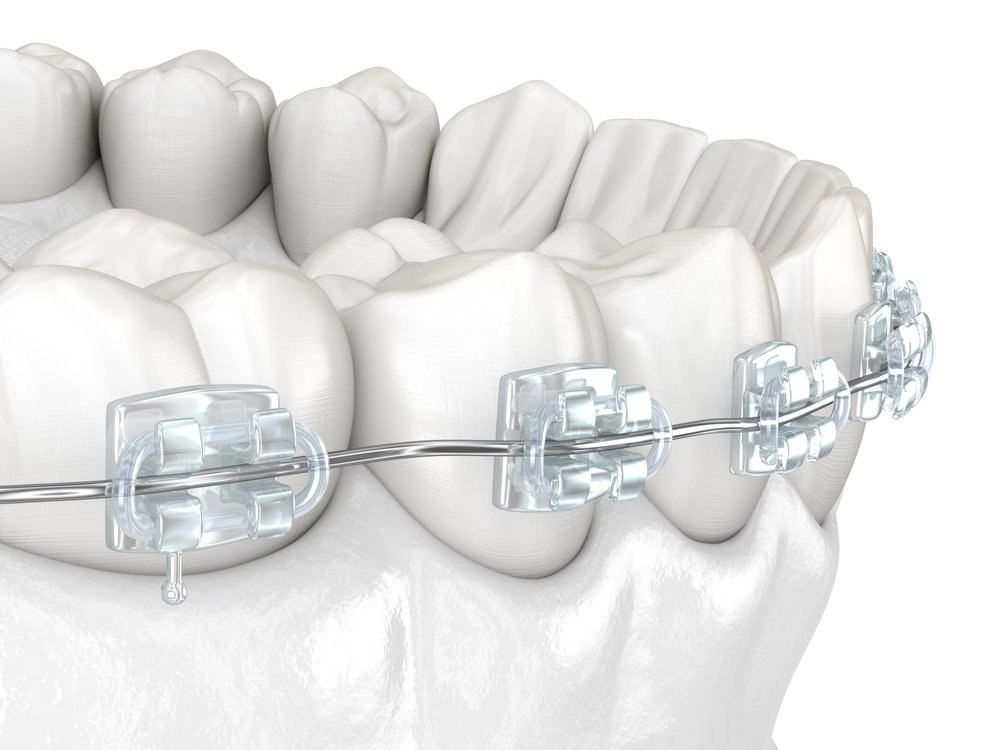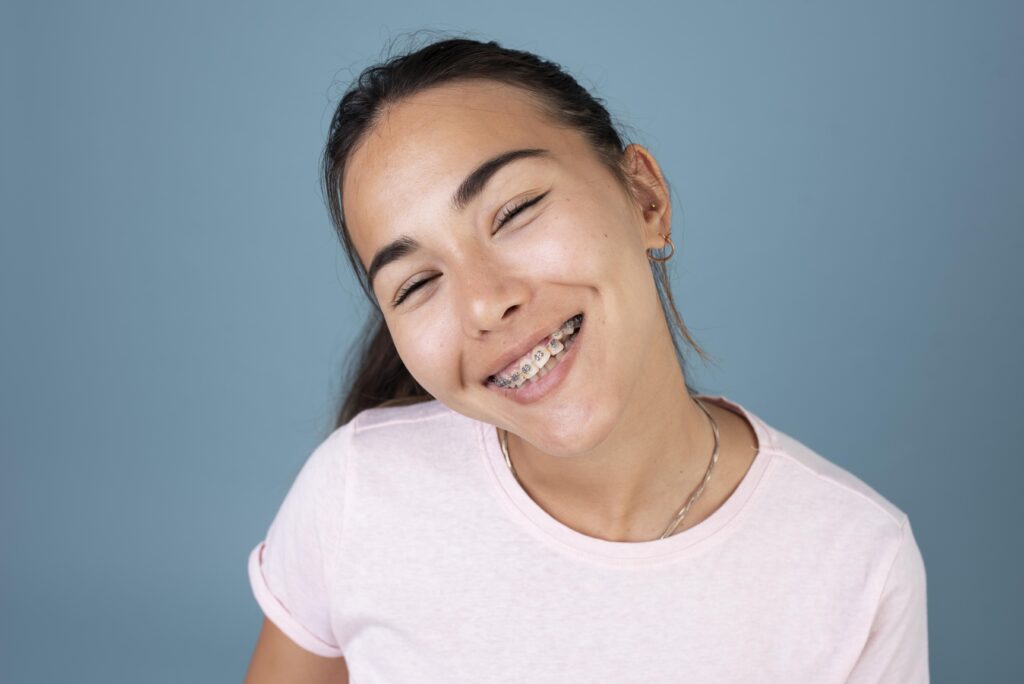It's all about
B.R.A.C.E.S
Curious about braces and want to learn more? Discover the ins and outs of this dental treatment that may seem adorable to you but might leave others with questions. Dive into the world of braces and explore how they work, their safety, maintenance requirements, and who can benefit most from them. Uncover all the fascinating details in this informative article on braces. Don’t wait—start reading now!


Conventional
Consist of metal brackets and wires that work together to gradually shift teeth into proper alignment.

Clear Aligner
Transparent, BPA-free plastic, these custom-made aligners are virtually invisible when worn.

Ceramic
They consist of clear or tooth-colored ceramic brackets that blend seamlessly with your teeth.
Braces
Nowadays, it’s not unusual to come across individuals wearing dental braces. However, do all people require them? And why do they choose to wear braces?
People opt for braces for various reasons. The primary purpose of orthodontic treatment with braces is to correct misaligned teeth. In some cases, braces are also utilized to address teeth protrusion. Other issues that may warrant treatment include tooth spacing, tooth loss, improper bite alignment, and jaw discrepancies. Additionally, young children may undergo early orthodontic treatment to address problems related to tooth eruption.
When is a good time to start Braces?
For the majority of individuals with misaligned teeth and normal jaw growth, treatment typically begins when most permanent teeth have erupted. This typically occurs around the ages of 11 to 13. However, there are cases where early intervention becomes necessary. Some children may experience developing jaw discrepancies, resulting in abnormal jaw growth. Others may encounter difficulties with the eruption of permanent teeth due to either limited space or teeth misalignment. In such situations, early braces treatment becomes essential to aid in jaw growth or guide teeth into their proper positions. This early intervention can occur between the ages of 7 to 11. Often, these issues go unnoticed, which is why the American Association of Orthodontists recommends that children see an orthodontist by the age of 7.

Are braces exclusively for teenagers? Can I still get braces if I'm older?
Typically, orthodontic treatment is commonly done during the teenage years. This age range is favorable as tooth movement tends to be more efficient in younger individuals. Moreover, adolescents may still have some remaining growth potential, which can be advantageous during the treatment process. However, it’s important to note that adults can also benefit from braces. There is no age limit for getting braces because teeth can be straightened even in adulthood. So, regardless of your age, it is never too late to explore the option of braces and achieve a straighter smile.
I'm considering aligning my teeth, but I'm self-conscious about wearing traditional metal braces. Are there alternative options available?
With more adults seeking orthodontic treatment, there has been an increase in demand for less noticeable or invisible braces. Thankfully, there are braces available that not only address the desire for a more discreet treatment experience but also fulfill their functional purpose like traditional metal braces.
Ceramic braces, which consist of tooth-colored ceramic brackets, offer a common solution for patients concerned about the visibility of their braces. These braces are less noticeable at first glance, although a thin metal wire may still be visible up close.
Invisible braces, such as clear plastic aligners, provide another aesthetic option for those wishing to straighten their teeth while maintaining a natural appearance. This system involves wearing a series of custom-made aligners that gradually shift the teeth into the desired positions. Due to the transparency and clarity of the aligner material, they are barely noticeable when worn over the teeth. These braces are convenient and hygienic as patients can remove the aligners during meals and when cleaning their teeth.
I've heard that wearing retainers is necessary after completing braces treatment. What is the reason behind this?
After undergoing orthodontic treatment, the teeth undergo a slight period of instability in their new positions. This is because the surrounding gum tissue has a tendency to cause the teeth to revert to their original positions. To minimize this risk, retainers are typically worn over the teeth to maintain the corrected positions. Initially, the retainers are worn throughout the day, with the exception of eating and brushing. As the teeth gradually stabilize over a few months, the retainers may be worn exclusively at night to ensure the long-term stability of the teeth.

Tips and Tricks for Effective Clear Aligners Treatment

At-Home Remedies For Tooth Cavities

The Impact of Coffee and Tea on Tooth Staining
Navigating Self Treatment after Tooth Extraction

Does Diabetes Affect the Treatment of the Tooth?

Learn How to Restore a Chipped Tooth Without Implants

The Importance of Tooth Alignment with Braces

Understanding Wisdom Tooth Pain

What to know before whitening your teeth


